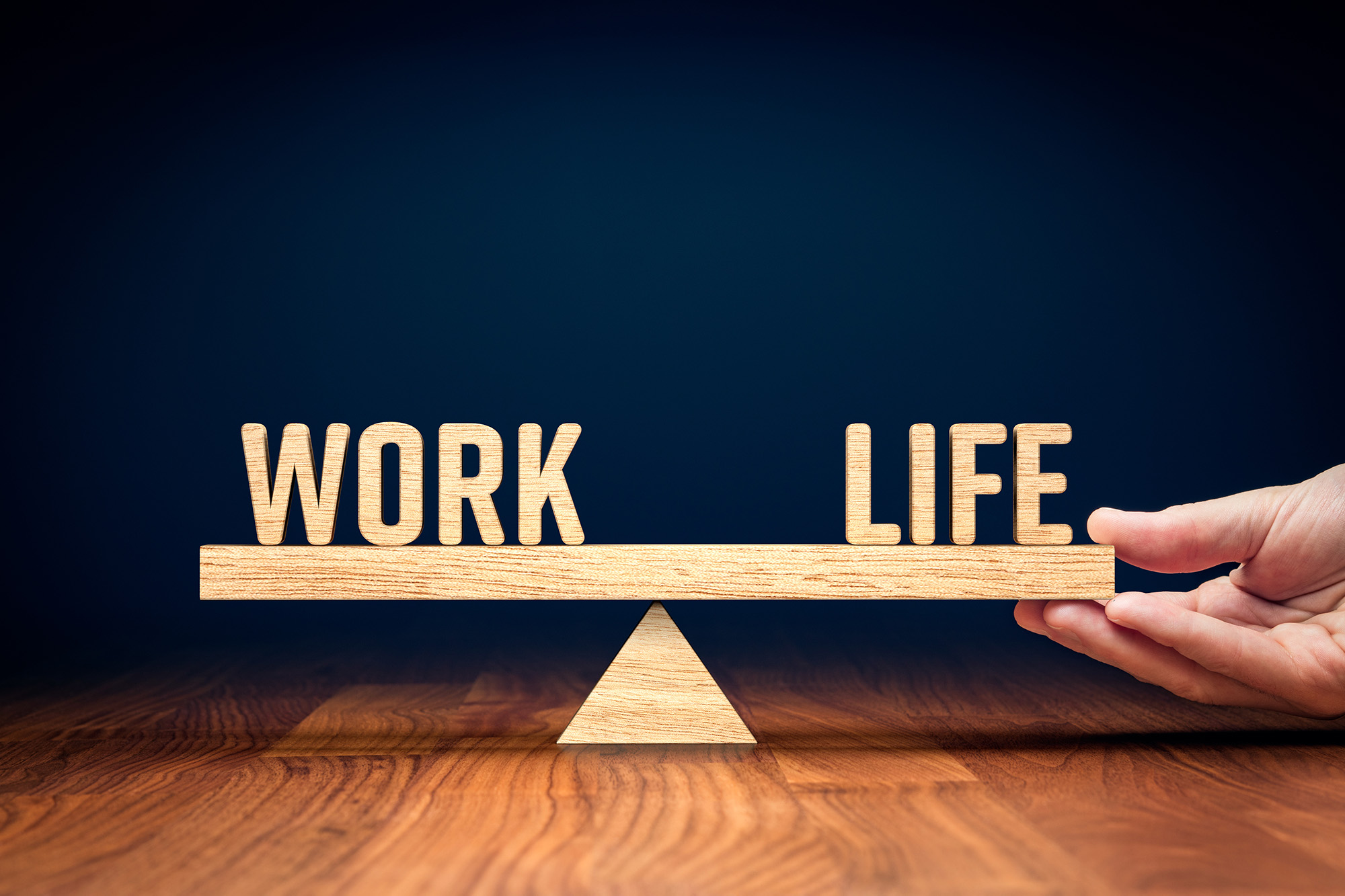The importance of keeping a healthy work/life balance
In today’s fast-paced world, it has become increasingly difficult to strike a healthy balance between our professional and personal lives. The constant race for success, technological advancements, and an ever-demanding work environment have only exacerbated this challenge. However, maintaining a healthy work-life balance is crucial for our overall well-being and productivity and success in the long run.
What Exactly is Work-Life Balance?
Work-life balance refers to the harmony individuals strive to achieve between their professional and personal lives. It is a state where individuals can effectively manage their time, energy, and resources to fulfill their professional responsibilities while nurturing their personal relationships and interests. This is usually the definition you come across when you look it up. This is becoming an ever-evolving idea that keeps adapting as the workforce changes. The idea is simple, right? We need to have this equilibrium between the hours we work and the hours we have for ourselves and our friends and family; case in point. Or is there more to it?
For the concept of work and life to remain balanced, they must be completely opposite. This means you must choose which one you want more during a given time. Following that notion would indicate that you must be willing to continuously go back and forth between these options to remain balanced. As stated in the definition above, the “harmony” between our professional and personal lives creates this ideology. Rather than looking at it from the perspective of choosing, we can look at it from the standpoint of moving between the two and evaluating where you are at a point in time. According to author and motivational speaker Simon Sinek, he states that the two shouldn’t be in opposition but rather work in tandem FOR the individual, not against.
An article by Loana Lupu and Mayra Ruiz-Castro from the Harvard Business Review illustrated that the authors conducted a series of interviews with mid and senior-level managers at two global firms to explore what it takes for a busy professional to make a change for the better. The study concluded with the authors emphasizing that to achieve long-lasting change; you must view the process not as a one-time activity but as a cycle in which you constantly re-evaluate your evolving feelings and priorities and adjust your work and life choices accordingly. It’s almost like viewing it like a pendulum. You have the initial swing from the ball held from a string or wire, which swings back and forth. Eventually, the swinging will stop in the middle after some time, and the ball will sit in the middle until a new event occurs and the ball swings again. We can look at this cycle similar to what the authors mentioned about re-evaluating your current situation and adjusting accordingly. When the pendulum stops in the middle, this reflects the moment to re-evaluate where you are and see any adjustments that you need to make if your feelings or priorities have changed.
Determining factors of work-life balance
There are many things to consider when determining what is a good work-life balance, and everyone is different. Some individuals may prefer putting more time into their work because they genuinely enjoy it. Some may perceive this type of person as a workaholic, but the individual looks at it from a different perspective. Individuals may find themselves at a stage where they are driven to achieve as much as possible in their career, and professional achievements are a driving component to their happiness. An article by Dr. Liji Tomas, MD, from the News Medical Life Sciences, highlights the determinants of a work-life balance regarding these factors and the importance of the possible results from these aspects.
The work environment is another essential factor to keep in mind. If a workplace is enjoyable and fulfilling, one may find a positive impact from where they work, making it easier to show up for work every day and boosting productivity and job satisfaction. Conversely, one may find themselves in a job they are comfortable with but mostly stay in the role because of how the organization prioritizes the employee’s values.
Let’s take an employee’s time as an example. Through all the electronic devices available to us, we will most likely have access to our work emails or communication software connected to our devices, making it hard to unplug from our work. Of course, this can be a gray area, depending on your role and career. Suppose an organization understands the importance of someone’s personal time. In that case, it is likely that the workplace promotes healthy work hours and fosters a work-life balance for their employees. Putting their employees at a higher precedence builds trust amongst one another, and the employees find themselves valued professionally and respected personally, creating a type of balance.
Personal Values and Priorities
Evaluating how you prioritize your home life is another crucial factor. No matter how great the organization you work for, it can be challenging to create this balance if you are not mindful of how you spend your time outside of working hours. Just like how it was mentioned before about easy access to so many electronic devices, the same applies for personal uses. The world we live in today makes it incredibly easy to find ourselves distracted with going on our devices to spend a great deal of our time off work hours, scrolling through social media, or streaming a show. It’s not a bad thing to want to turn off our brains during the day, but too much of these activities can lead to sitting down even longer hours during the day or staying up later than usual. Things to consider for helping improve in these areas are:
- Getting a good night’s sleep – Not staying up late and depending on high-caffeine drinks to get you through the day.
- Treating your body right – things like eating right, moving around more, or just getting off technology entirely can drastically improve the way you feel, hence having better performance.
- Having support – friends and family can help take your mind outside of work mode and unplug.
Again, there are a lot of gray areas, and everyone has a different situation. There are situations when someone just cannot find time after work hours to nurture themselves because they may have others to attend to. If you are someone with a family, it may be more important to prioritize your time with your family. Time spent nurturing personal relationships is often sacrificed when individuals become too involved in their careers. This can lead to strained relationships and feelings of isolation. A healthy work-life balance ensures individuals have the time and energy to connect with their loved ones, fostering stronger relationships and more fulfilling personal life.
A person who sees their personal health as a top priority can be another example. Staying active and being mindful of self-care may be a top item on your list to satisfy your position for creating a balance. A well-balanced life allows individuals to pursue their hobbies, interests, and passions outside work. Engaging in these activities enhances personal growth and helps develop new skills that can positively impact their professional life.
Workload and Stress Management
Today’s common issue is that stress can affect physical and mental health. Studies have shown that individuals with poor work-life balance are at a higher risk of developing health issues such as obesity, heart disease, and depression. By prioritizing a healthy work-life balance, it can significantly reduce stress and prevent various health problems, leading to a happier and more active life. And contrary to popular belief, working longer hours does not necessarily translate to increased productivity. In fact, it can lead to burnout, which can negatively impact the quality of work. By fostering a balanced work-life approach, individuals can ensure they are well-rested and focused, ultimately enhancing their productivity and job satisfaction.
Conclusion
There’s a lot to consider when talking about this topic. We’ve discussed many factors, possible outcomes, and initiatives that can create something that gives us purpose and, ultimately, a good balance. I’ll conclude with a quote from a popular Ted Talk by author Nigel Marsh. In his talk, he says: “If you don’t design your life, someone will design it for you, and you may just not like their idea of balance.” So, when the cycle comes back and the pendulum stops, re-evaluate your situation and see what adjustments you can make to have work and life work together.
References
- https://www.news-medical.net/health/Importance-of-a-Work-Life-Balance.aspx
- https://mhanational.org/work-life-balance
- https://info.totalwellnesshealth.com/blog/what-is-work-life-balance
- https://hbr.org/2021/01/work-life-balance-is-a-cycle-not-an-achievement
- https://thehappinessindex.com/blog/importance-work-life-balance/
- https://employsure.co.nz/blog/what-exactly-does-work-life-balance-mean/








